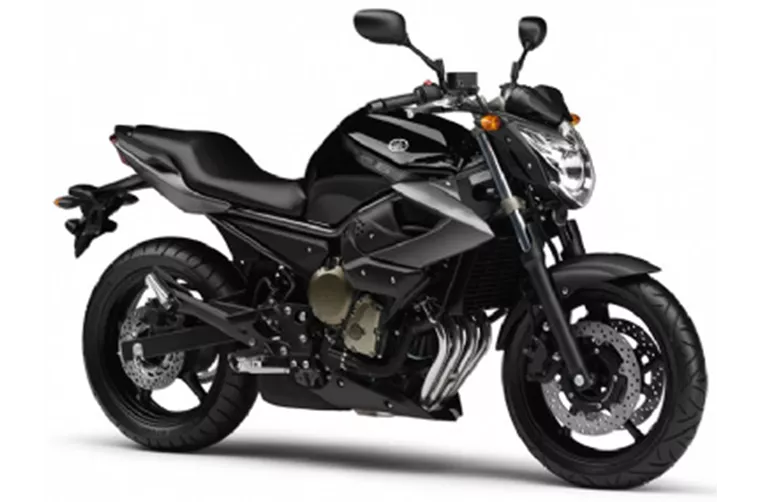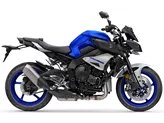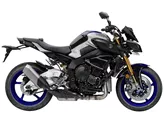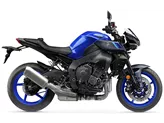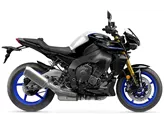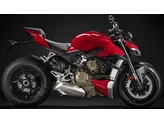Yamaha XJ6 2009 vs. Yamaha MT-10 2016

Yamaha XJ6 2009

Yamaha MT-10 2016
Vue d’ensemble - Yamaha XJ6 2009 vs Yamaha MT-10 2016
The Yamaha XJ6 model year 2009 and the Yamaha MT-10 model year 2016 are both naked bikes manufactured by Yamaha. While they share some similarities in terms of engine and drive train specifications, they also have distinct differences in various aspects.
In terms of engine power, the Yamaha XJ6 2009 has a power output of 78 HP, while the Yamaha MT-10 2016 boasts a more powerful engine with 160 HP. This significant difference in power output makes the MT-10 more suitable for riders who seek a more thrilling and high-performance experience.
Similarly, the torque of the two bikes also differs, with the XJ6 having 59.7 Nm of torque and the MT-10 having a higher torque of 111 Nm. This higher torque of the MT-10 provides better acceleration and a more responsive throttle, contributing to its strong character and agile nature.
Both bikes have four cylinders and liquid cooling systems, ensuring optimal engine performance and temperature regulation. However, the Yamaha XJ6 has a smaller engine displacement of 600cc, while the MT-10 has a larger engine displacement of 998cc. This larger displacement of the MT-10 allows for more power and torque, further enhancing its performance capabilities.

Yamaha XJ6 2009
In terms of suspension, the Yamaha XJ6 2009 is equipped with a telescopic fork front suspension, while the MT-10 2016 features an upside-down telescopic fork front suspension. The upside-down fork on the MT-10 provides better stability and improved handling, making it extremely agile and suitable for aggressive riding.
The chassis of the two bikes also differs, with the XJ6 having a steel frame and the MT-10 featuring an aluminum frame. The aluminum frame of the MT-10, known as Deltabox, is lighter and more rigid, contributing to the bike's overall agility and high-speed stability.
Both bikes have double disk front brakes, ensuring strong and reliable stopping power. The front tire diameter and rear tire diameter are the same for both bikes, measuring 17 inches. This standard tire size provides good grip and stability.

Yamaha MT-10 2016
In terms of dimensions and weights, the Yamaha XJ6 2009 has a slightly longer wheelbase of 1440mm, compared to the MT-10's wheelbase of 1400mm. The seat height of the XJ6 is 785mm, while the MT-10 has a higher seat height of 825mm. The fuel tank capacity is similar for both bikes, with the XJ6 having a capacity of 17.3 liters and the MT-10 having a capacity of 17 liters.
When it comes to strengths, the Yamaha XJ6 2009 is praised for its rider-friendly performance characteristics, optimal clutch, playful and lighter handling, comfortable seat, individual look, and high-quality build. On the other hand, the Yamaha MT-10 2016 is known for its CP4 engine, strong character, extremely agile nature, high-speed stability, strong brakes, and unmistakable sound.
However, the XJ6 2009 does have some weaknesses, including design components that are not too demanding and a torque development that may not be as impressive as some other bikes. The MT-10 2016 also has its weaknesses, such as poor comfort, limited wind protection, and a hard fit for some riders.
In conclusion, while both the Yamaha XJ6 2009 and the Yamaha MT-10 2016 are naked bikes with their own strengths and weaknesses, the MT-10 stands out with its significantly higher power and torque, as well as its agility and high-speed stability. The XJ6, on the other hand, offers a more rider-friendly and comfortable experience with its lighter handling and individual look. Ultimately, the choice between the two would depend on the rider's preferences and intended use.
Caractéristiques techniques Yamaha XJ6 2009 par rapport à Yamaha MT-10 2016
Avantages et inconvénients en comparaison
Avantages et inconvénients en comparaison
Yamaha XJ6 2009
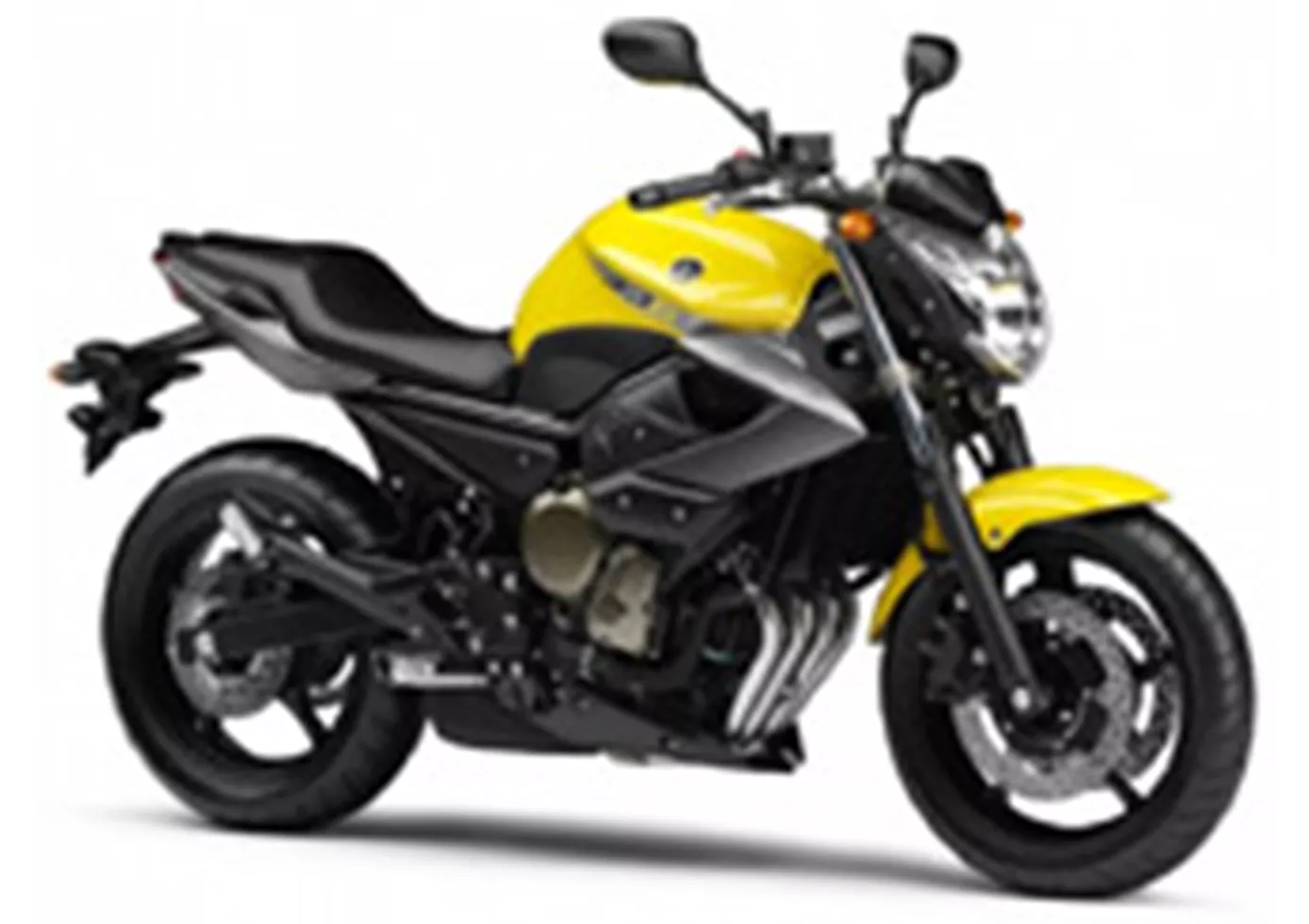
Malgré une base commune, la XJ semble nettement plus jeune et plus agressive. Une moto de milieu de gamme avec laquelle on ne se sent en aucun cas de classe moyenne. A l'exception du bras oscillant, la moto semble plutôt haut de gamme et cool. La moto est un peu plus souple que la Diversion.
Yamaha MT-10 2016

La MT-10, courte et trapue, est la plus éloignée de la superbike R1, tant au niveau de l'esthétique que du châssis, mais le cœur de la MT-10 est directement issu de l'arme de la piste de course et fascine par sa sonorité brute unique et sa force d'attaque par le bas grâce au décalage typique des tourillons qui, avec une séquence d'allumage modifiée, lui confère ce caractère unique. Les 160 ch qui en résultent ne semblent donc que sur le papier un peu faibles par rapport aux plus de 200 ch de la R1, mais en réalité, la MT-10 déclenche elle aussi un feu d'artifice incroyable. Le châssis serait probablement trop souple pour la piste de course, mais il est tout à fait adapté à un combat sur route et le freinage fait de même - acceptable pour la piste, mais parfait pour la route.
Comparaison des prix Prix moyen du marché Yamaha XJ6 vs Yamaha MT-10
There are a few key differences between a Yamaha XJ6 2009 and a Yamaha MT-10 2016. In terms of price, the actual average price of a Yamaha MT-10 2016 is about 145% higher. A Yamaha XJ6 2009 experiences a loss of 200 USD in one year and 20 USD in two years of ownership. This is offset by a loss of 800 USD and 1,840 USD for a Yamaha MT-10 2016. Compared to Yamaha MT-10 2016 there are less Yamaha XJ6 2009 bikes available on the 1000PS.de Marketplace, specifically 6 compared to 7. It takes less time to sell a Yamaha XJ6 with 31 days compared to 97 days for a Yamaha MT-10. Since model year 2009 1000PS.de editors have written 4 reviews for the Yamaha XJ6 and 32 reviews for the Yamaha MT-10 since model year 2016. The first review for the Yamaha XJ6 was published on 11/13/2008 and now has more than 21,900 views. This compares to more than 20,700 views for the first review on Yamaha MT-10 published on 11/17/2015.
